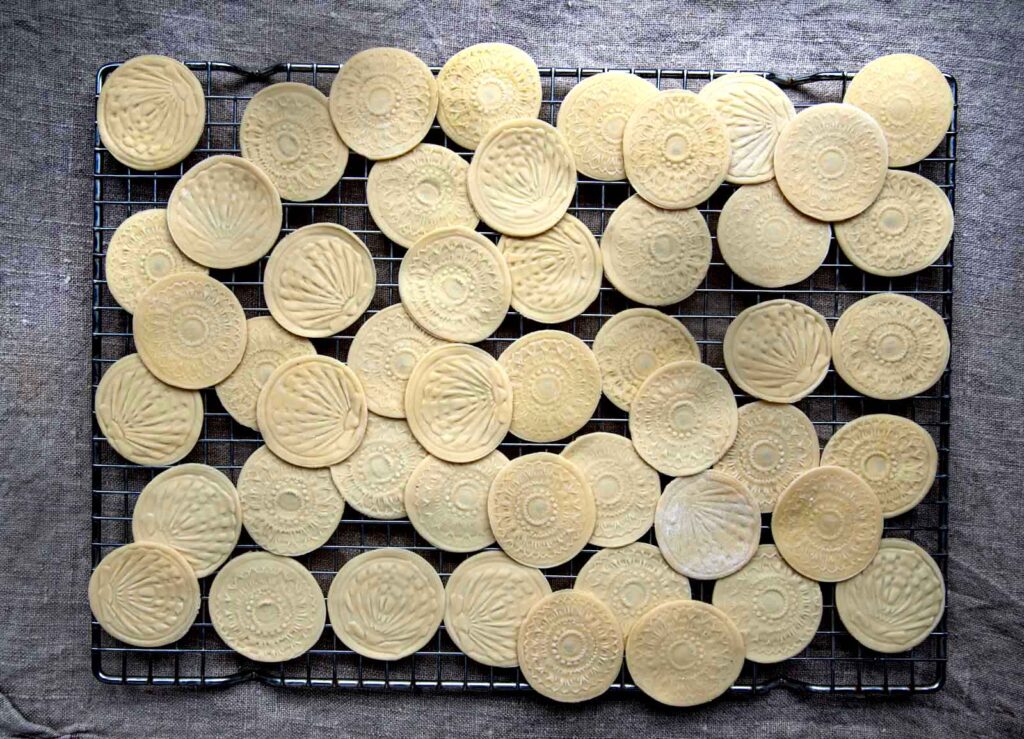Corzetti are a very old pasta, documented as early as 13th century, medieval Italy. Origin, Liguria, in northwest Italy.
Corzetti pasta is made using an engraved wooden stamp. Some historians believe its name derives from crozetto, a 14th century Genoan coin. Historically, the stamps depicted a family coat of arms or a stylized cross, crosetti, (an alternative theory of where they may have gotten their name). You can find hand-carved corzetti stamps with any number of motifs, including the scallop shell and sunflower as depicted below, from Wood Grain Gallery. The wood molds are made from a neutral wood, such as apple, pear, maple or beech (so the sap does not impart an unpleasant taste to the pasta).
Like other pasta shapes, recipes for corzetti vary. Some call for more eggs, some less. Some call for white wine, some do not. I decided to add some dry white wine and compensated for the extra liquid by adding less egg. I was happy with the texture of my corzetti — thick, with a good amount of chew. Although, I’d be curious to try other iterations.
They’re easy and fun to make. Just roll out the dough, fairly thick, #4 on my KitchenAid attachment. Cut into rounds, then stamp.
I served simply with a quick pesto that I pounded in a mortar and pestle and chopped pistachios.
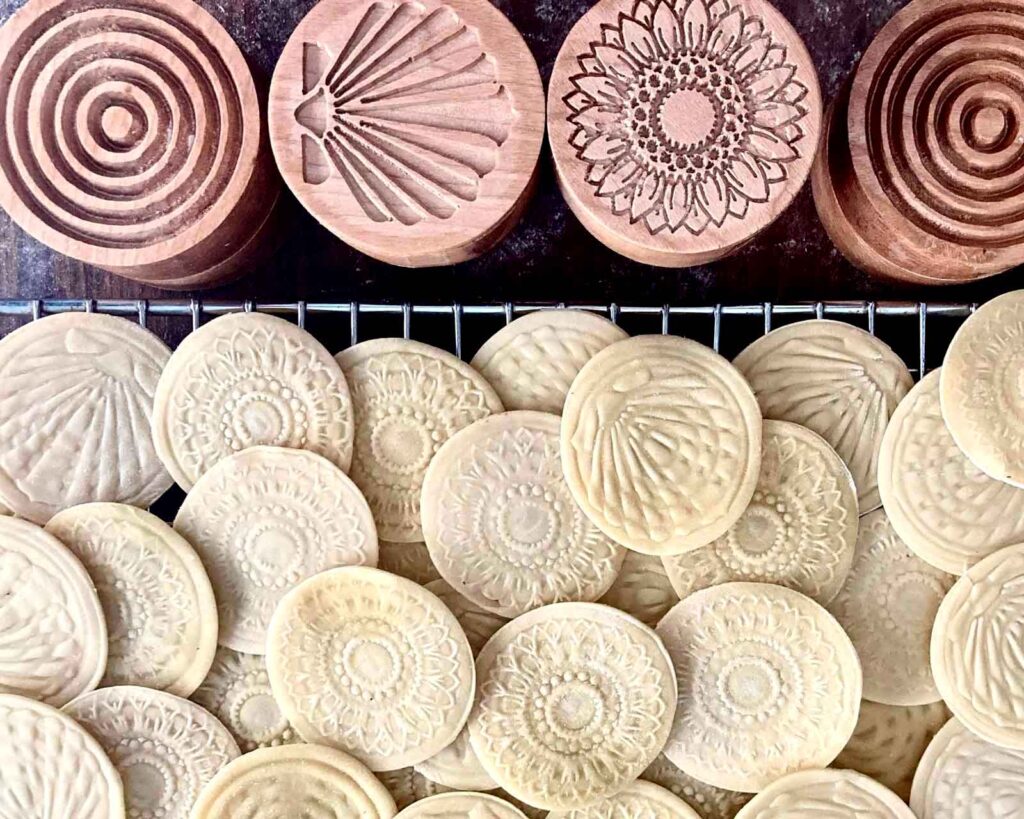
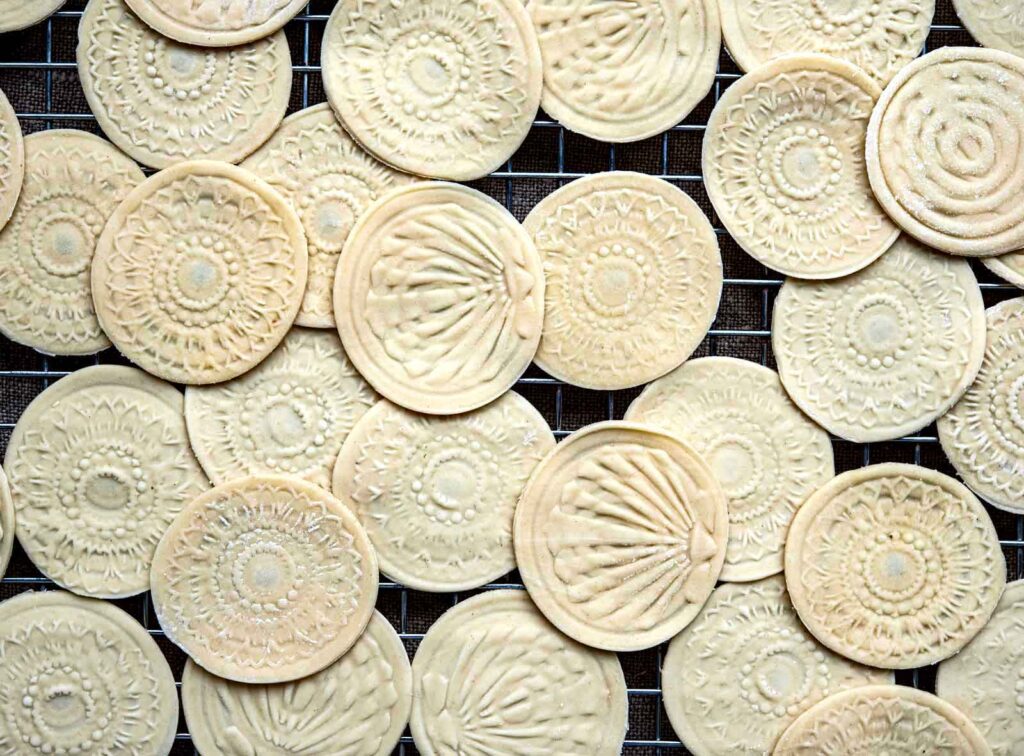
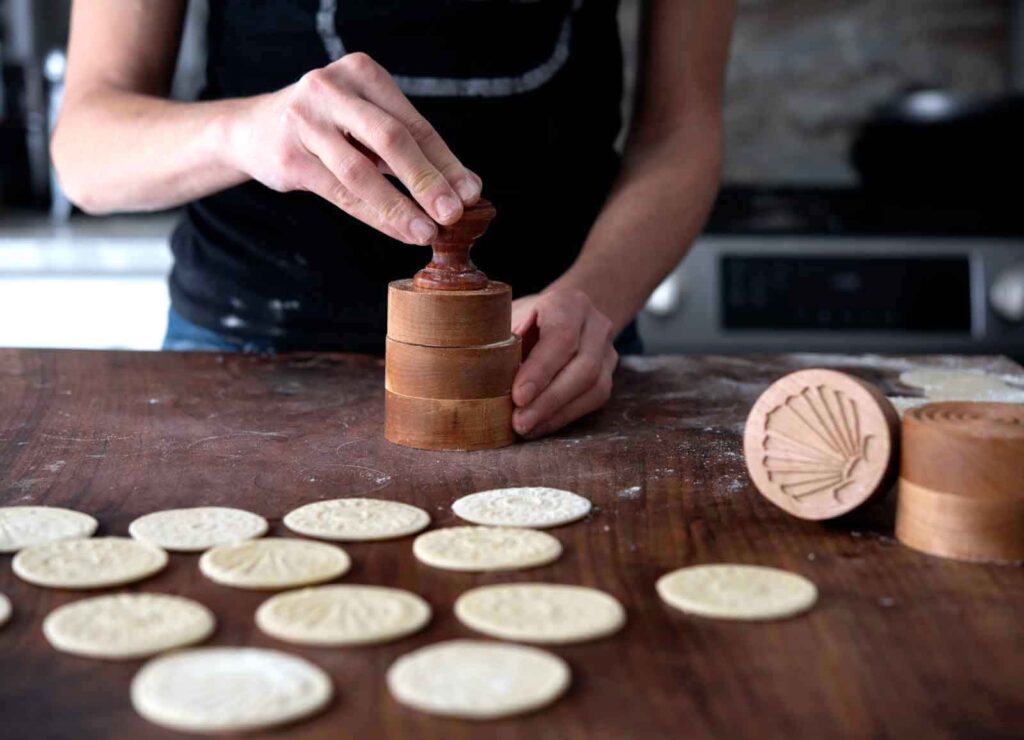
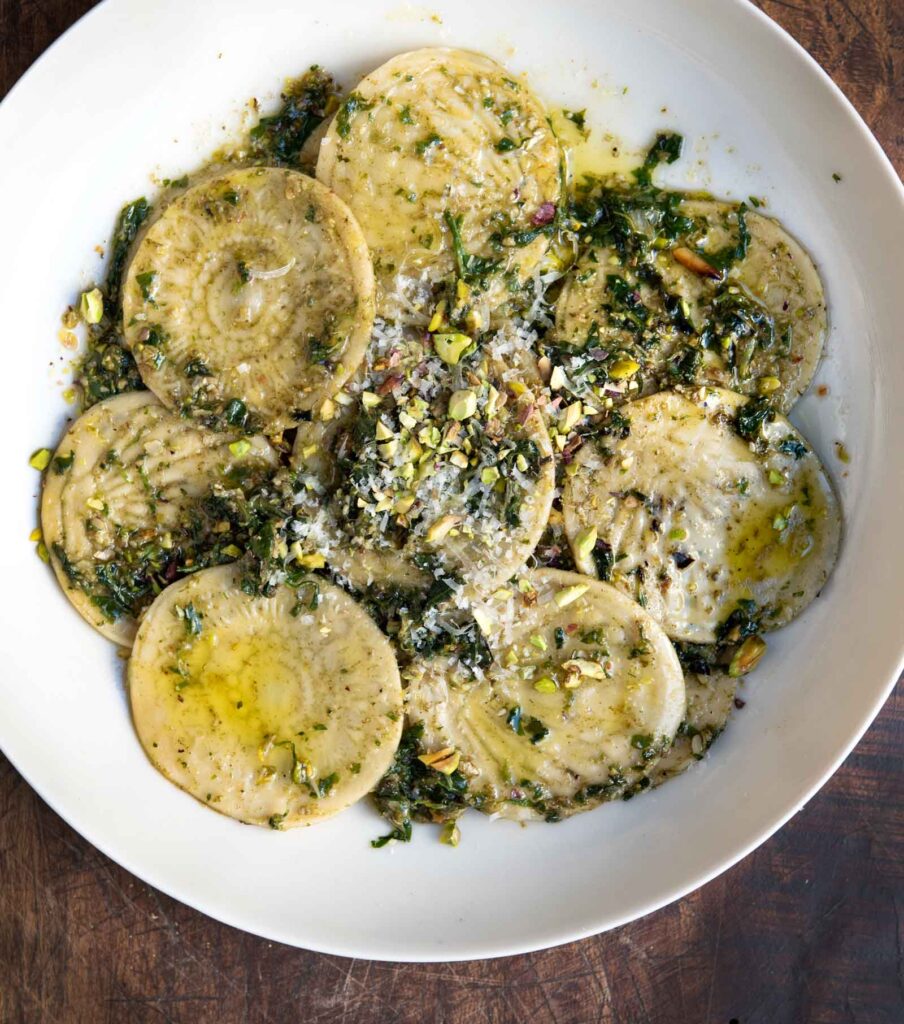
Corzetti
Ingredients
- 300 g 00 flour
- pinch of salt
- 1 egg
- 1/2 cup dry, white wine
Instructions
- Mound the flour and salt on a clean work surface. Make a large, shallow well in the middle.
- Crack the egg into the well. Add the wine. With a fork, gently beat the egg and wine; be careful not to disturb the walls of the flour. Slowly begin to incorporate the flour walls into the egg mixture. Continue mixing the flour with the eggs until you have a solid mass.
- At this point, using your hands, start folding and forming the dough, incorporating the rest of the flour until you have a stiff, solid mass (removing any dry clumps of flour). Knead the dough. Drive the heel of your hand into the dough, rotate the dough 45 degrees, and repeat until the dough is firm and bouncy and has a smooth, silken texture, about 10 minutes. Tightly wrap the dough in plastic and let rest 30 minutes.
- Cut off a portion of dough (keep the rest wrapped in plastic to prevent drying out). Run the dough through your pasta machine starting with the largest setting. Run it through each successive pasta roller setting (I rolled to #4 on my KitchenAid pasta attachment).
- Place the sheet on your worksurfacce. Using the bottom of the stamp cut into rounds. Stamp each round with your corzetti stamp. Place each round on a semolina dusted baking sheet to dry. Continue with the remaining dough.
- Once the corzetti are completely dry, an hour or two, they are ready to use (or you can freeze for a later date). The corzetti can go straight from the freezer into a pot of salted boiling water.

